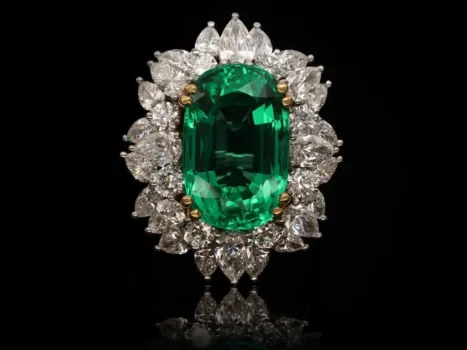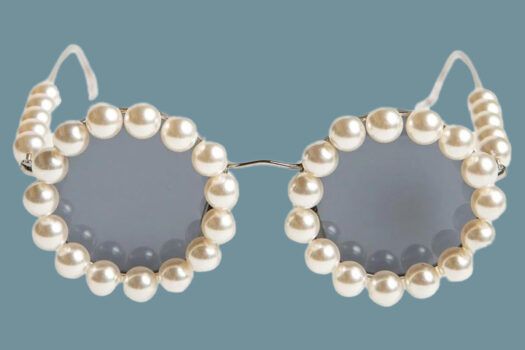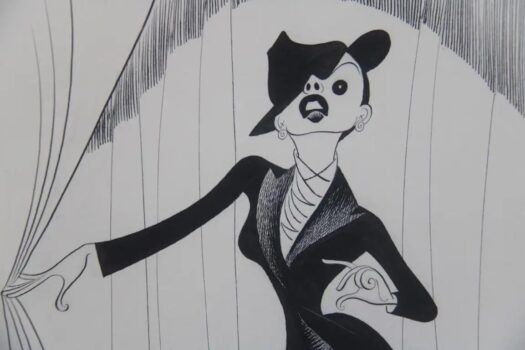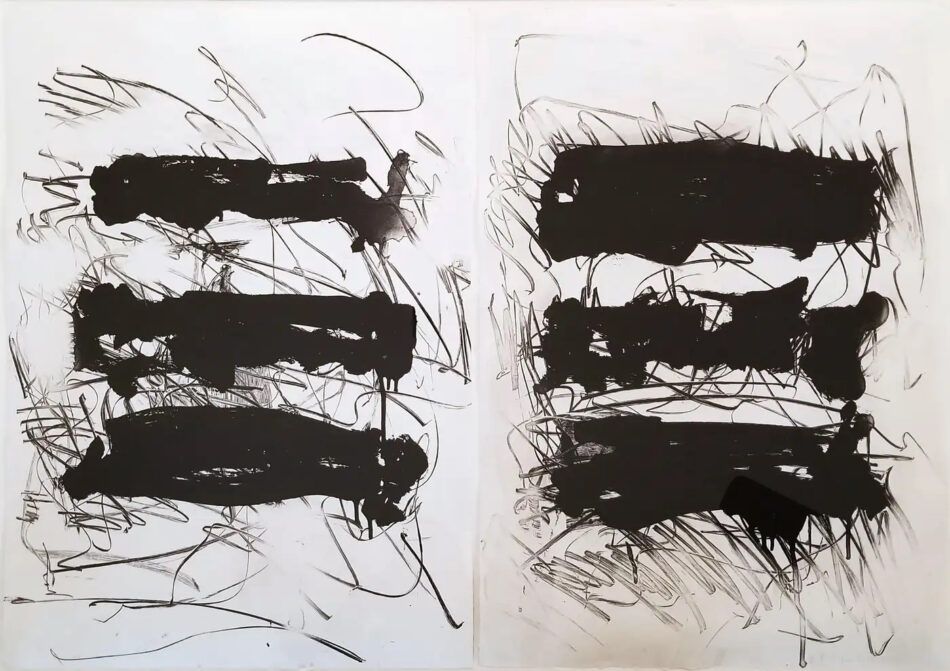
Joan Mitchell never followed the rules. In an era in America when domesticity was idealized and women were pressured to stay home and breed — the best bulwark against communism, they were told — Mitchell went in the opposite direction. Making art was her top priority, and she poured herself into her work.
Although her fellow AbExers may have been progressive in some ways, New York’s avant-garde art world was not a particularly female-friendly place. And with its emphasis on sweeping, gestural brushstrokes and giant canvases requiring a kind of muscular athleticism for the all-over painting effect, Abstract Expressionism was testosterone-filled territory.
That did not deter Mitchell. An athlete herself, having competed in figure skating, diving, tennis and horseback riding in her youth, she painted with a gestural intensity to match any of her peers, never using an easel and assertively building up webs of oil paint that managed to feel simultaneously heavy and light, sharp and soft, controlled and riotous.
She was one of the few women artists to gain the respect of figures like Willem de Kooning, Franz Kline and, of course, her mentor, Hans Hofmann. Further breaking the mold, in 1968 she left New York — the center of the art world at the time — for the countryside in Vétheuil, France.
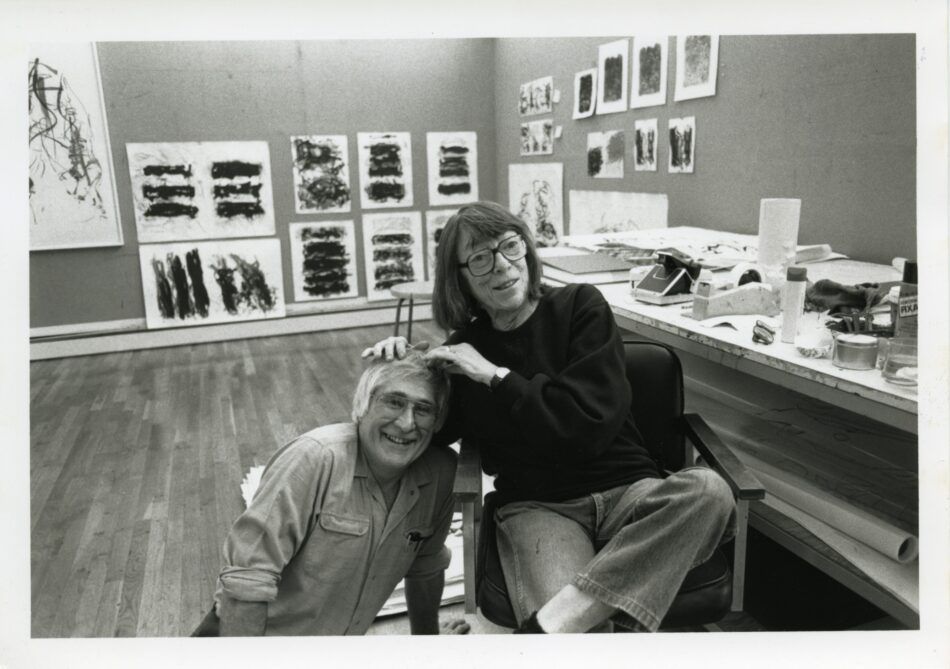
Mitchell also defied expectations when it came to her abstract subject matter. Many of her paintings and prints depict places — or feelings of them, as she was known to say. And while most artists would distinguish between landscapes and city scenes, for Mitchell, who drew and painted both, they were one and the same; she even titled a 1955 piece City Landscape. “Man made a city; nature grows. I see it all as nature,” she once said.
Fields I, a large diptych etching with aquatint — an intaglio process in which an image is incised into a metal plate that is then inked — is a perfect example. It was made in 1992, not long before she died, in collaboration with the iconic printer Kenneth Tyler in his Mount Kisco, New York, workshop, Tyler Graphics. The print displays a classic motif for Mitchell: a neat stack of rectangular forms surrounded by frenetic lines.
Mitchell returned to this basic composition again and again, in oil on canvas and in different types of prints, naming the works variations of “Fields” (or “Champs” in French). While the title Fields I indicates that the diptych represents a rural setting, it could just as easily be read as a densely populated one. The rectangular forms suggest parcels of land, stands of trees or garden plots, but they also resemble apartment houses or office buildings. The marks around them capture the feelings of both wild vegetation and urban frenzy.
Mitchell was a highly skilled colorist, and her vibrant hues added intense expression and dimension to her abstractions. So, it’s unusual to see an all-black work from her, even as a print. The dark ink presents an opportunity to really observe her hand, to witness without the distraction of color her gestural mark making as she drew on the copper plates. Each line is distilled in high contrast against the paper. The diptych was one of her beloved formats, and in Fields I, the two halves appear in dramatic conversation with each other.
“The fact that this is an etching with aquatint — an intaglio print — makes it exceptional and far more interesting,” says Alex Graves, of print specialist Graves International Art, which is offering the work on 1stDibs. “The process gives it more texture and literal depth, more of an impression.”
Mitchell didn’t produce hundreds of prints, like some artists of her generation, and many of the ones she did make are lithographs, not etchings. “I can’t express how rare this diptych is,” says Graves. “Any print by Joan Mitchell you see appear on the market is exciting, but editions from this print run just don’t turn up.” That’s because she made just seven, plus three artist’s proofs (prints made ahead of the numbered edition to assess the quality of the plate). As indicated in her signature, the work on offer is the third artist’s proof.
Mitchell and Tyler had collaborated before and were close friends by 1992. Photos show them together with Fields I in the background. “It’s one of the last prints she made with him,” says Graves. “And we owe him a lot of credit. He really urged her toward printmaking in her later years.”
In their powerful inky blackness, the rectangular forms in the diptych also suggest gates in a field. They are a fitting coda to the life of a towering figure who was instrumental in removing barriers for female artists to come.

